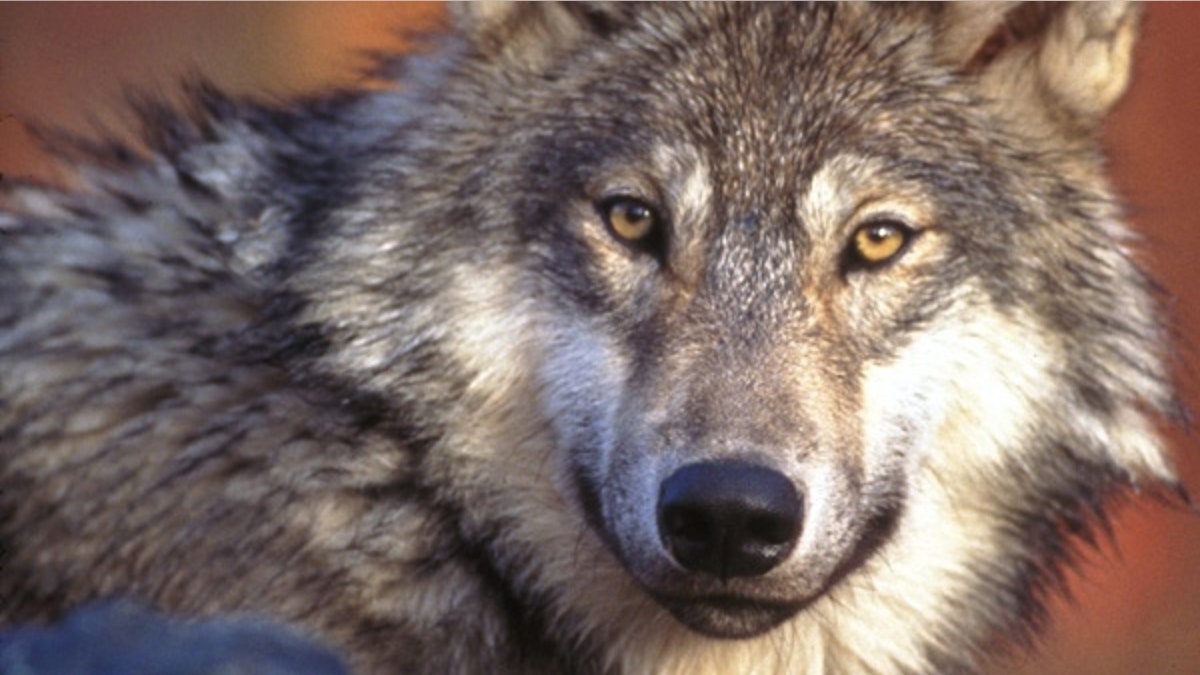
The Idaho Gray Wolf is no longer endangered, but there are strict regulations for hunting them. (AP)
A former Navy officer who shot a wolf he thought was poised to attack his dogs while they were out for a walk in northern Idaho won't get to keep the pelt - and he could be in big trouble.
Forrest Mize, 53, a former lieutenant commander, said he shot the beast with a .22 rifle he carries because of mountain lions around his Rathdrum home because it was crouched and ready to pounce. After the Dec. 30 incident, he decided he wanted to make a trophy out of the 100-pound wolf, and that was when his problems began. To legally bag a wolf, hunters must first buy a tag from the state Department of Fish and Game. It's permissible to shoot one in self-defense, but you don't get the carcass or the pelt.
“The only way you can legally harvest an animal and retain possession of that is to hold a license and a tag,” said Idaho Fish and Game spokesman Mike Keckler.
Mize wanted to hang the Idaho Gray Wolf's pelt on a wall in his home, but a taxidermist refused to take the job because he did not have a tag. He applied for the $11.50 tag retroactively, but state conservation officials somehow found out, he told KXLY.com.
Mize is now facing a misdemeanor violation that has a maximum penalty of $1,000 and up to six months in jail.
“I guess I could have thrown him in the trash and been done with it or skinned it myself. I tried to do the right thing, but I guess I did it the wrong way.”
“You have every right to protect your property and your person from a predator,” said Keckler. “But once you do that, you must notify Idaho Fish and Game of the incident and the state will take the possession of the animal.”
Keckler would not say how Fish and Game found out about the wolf because of the ongoing investigation. Fox News reached out to local taxidermists in the area but received no comment.
“I didn’t see another way to do it,” Mize told KXLY.com. “I guess I could have thrown him in the trash and been done with it or skinned it myself. I tried to do the right thing, but I guess I did it the wrong way.”
Strict regulations first implemented in 1973 are credited by environmentalists with helping the wolf population rebound over the last several decades. According to the Sierra Club, there are now 1,800 gray wolves in the Northern Rockies and 4,000 in the Great Lakes states. Wolves in Idaho were officially taken off the endangered species list in May 2011, according to the U.S. Fish & Wildlife Service.
But the protections remain in place, and state conservationists take them seriously.
“If you kill a wolf, you have to take the skin of the wolf and the skull of the wolf to a state agent and have it verified,” University of Idaho Law Professor Dale Goble told Fox News. “Then they take a tooth out of it because they’re monitoring the age of the wolfs that are being killed to maintain the population.”
Mize told KXLY.com he will go to court and try to get the violation dropped and hopes the judge will be more understanding.
"I'm not a poacher," he said.
